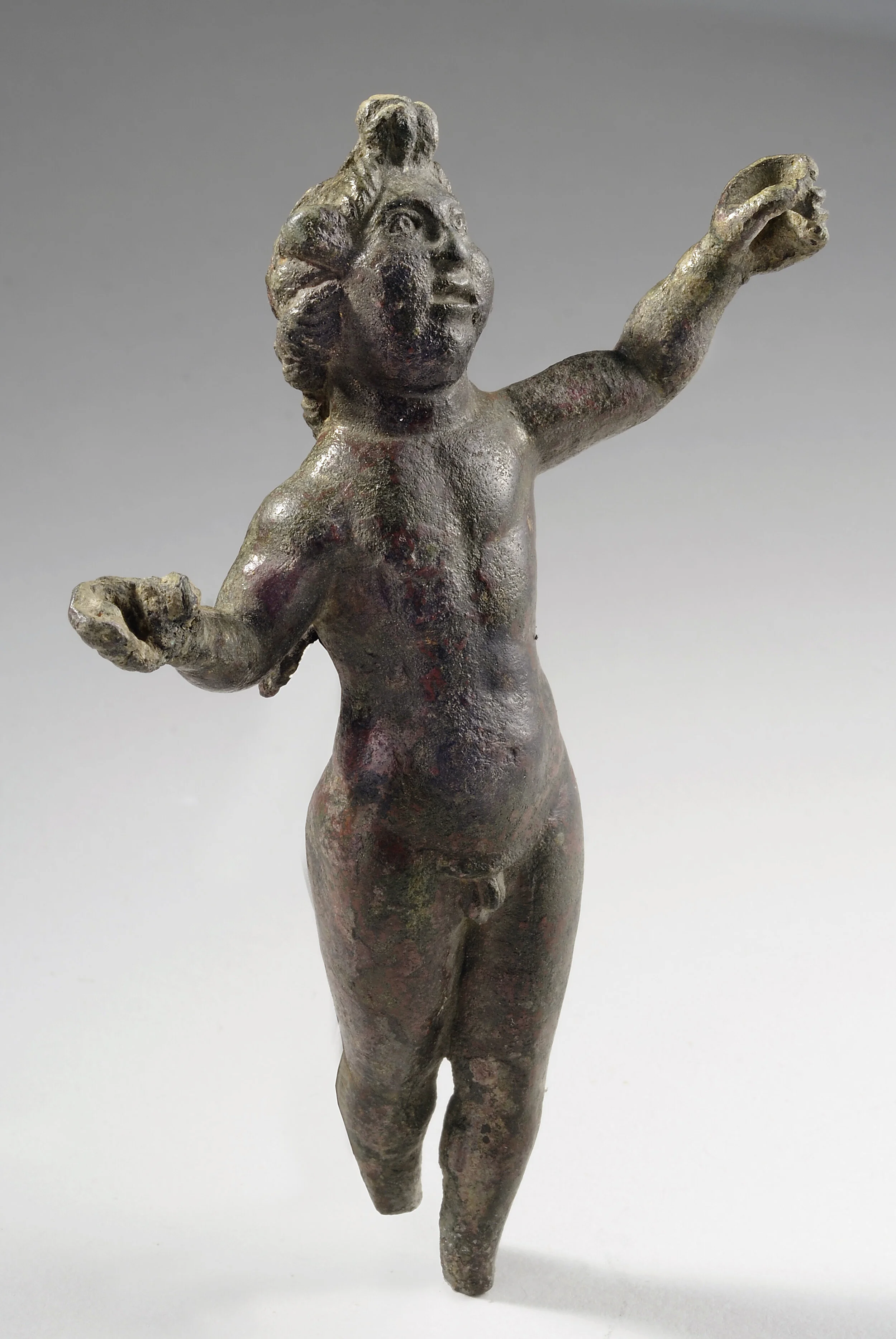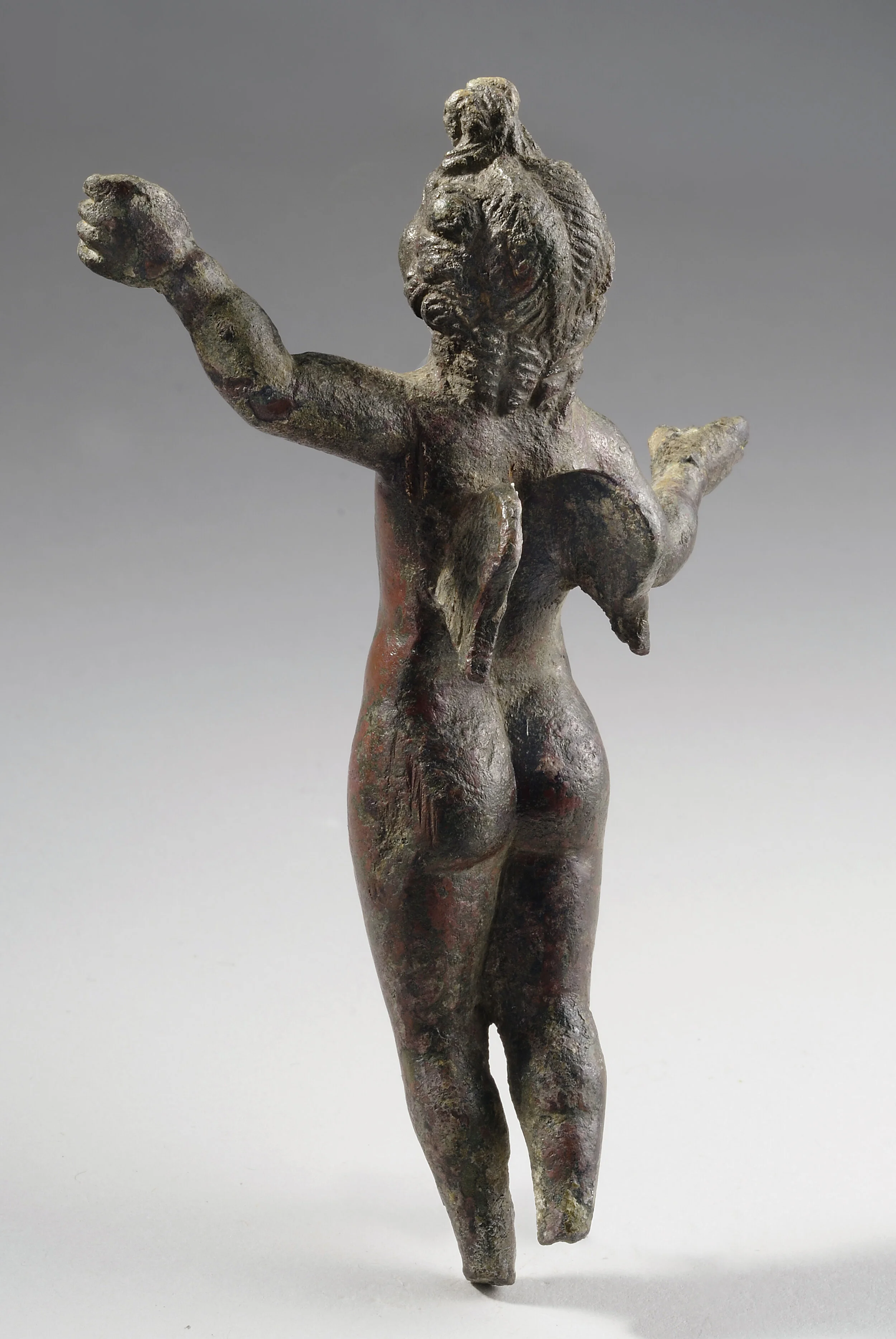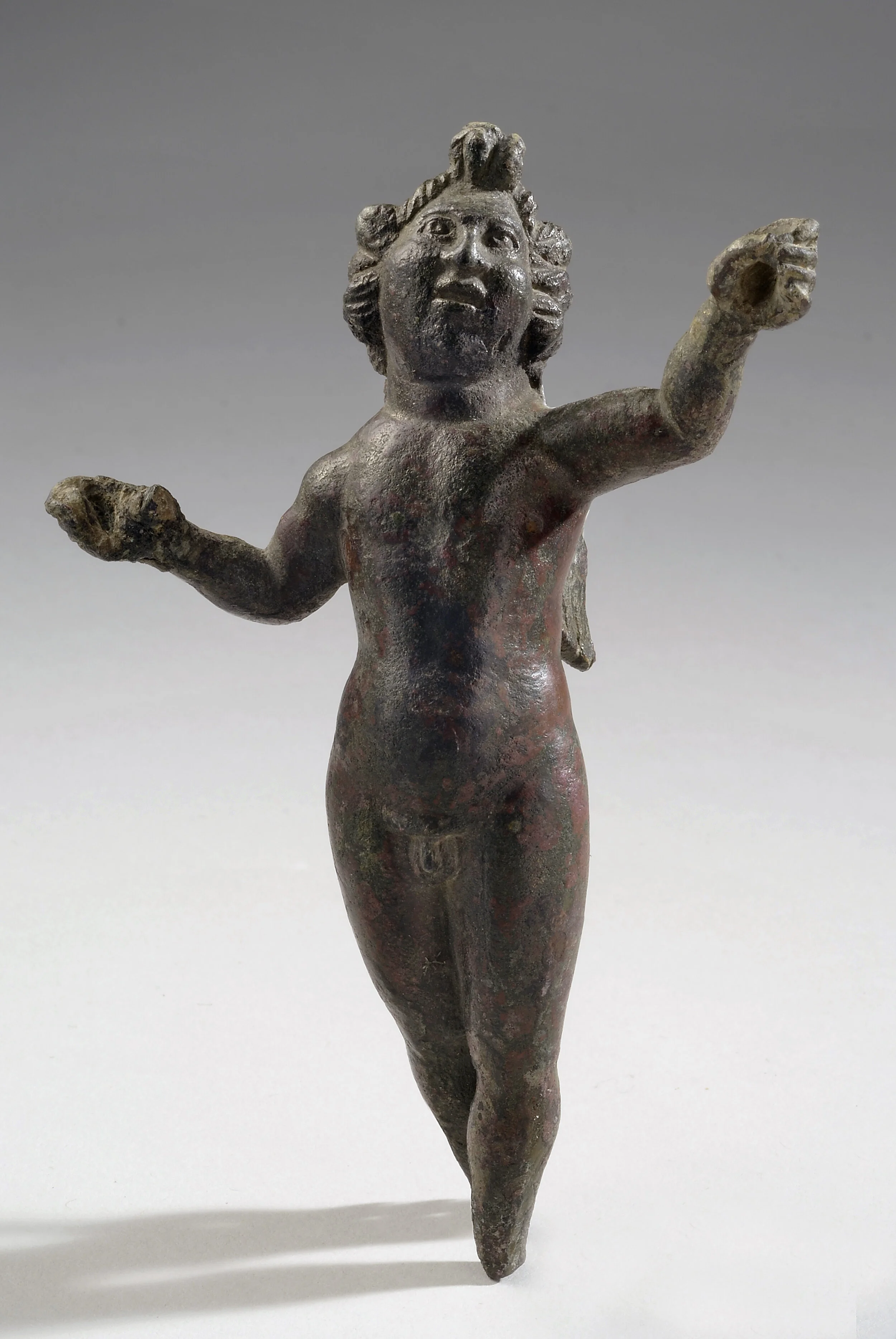Ancient Roman Bronze Eros






Ancient Roman Bronze Eros
Roman, 2nd - 3rd century A.D.
Bronze
H: 11.6 cm
Serial: 2954
Provenance: Private collection, acquired in the late 1970’s – early 1980s
With a joyful expression this nude Eros strides forward with outspread wings, almost in a graceful dance step. His chubby, rounded face is framed by spiral curls surmounted by a large knot of hair over the center of his forehead. The hair on top of his head is arranged in a braid with curls spiraling downward over the back of his neck. He stands on his left leg while his right leg is drawn back. His body is in a twisted, serpentine pose that adds a certain rhythm and liveliness to the bronze statuette. It is well-modeled: the nipples of the chest are indicated, the figure is open-mouthed, and the pupils of his eyes are made with punctuate dots, all of which further animate the god of love. He is represented with his left arm raised, offering up something held in his hand, while his right hand, also made to hold an object, is extended outward. The gesture is reminiscent of the standing and dancing pose of the lares (Roman guardian spirits), who usually hold a vessel for pouring libations or wine drinking in their upraised hand and a saucer or phiale in their lowered hand.
The statuette is of well documented type from the Hellenistic and Roman periods. Like comparable bronzes from Roman Gaul or Germany, the figure was likely the product of a local workshop that specialized in similarly modeled figurines. Such figures of Eros were likely made in the second and third centuries A.D. Other examples found in collections of Roman bronze statuettes generally come from areas throughout the northern and western provinces of the Roman Empire. These small Eros statuettes carrying objects may have functioned as votive offerings to Eros, or, if included as part of a bronze grouping with Aphrodite, such erotes may have served as attendants to the goddess.






